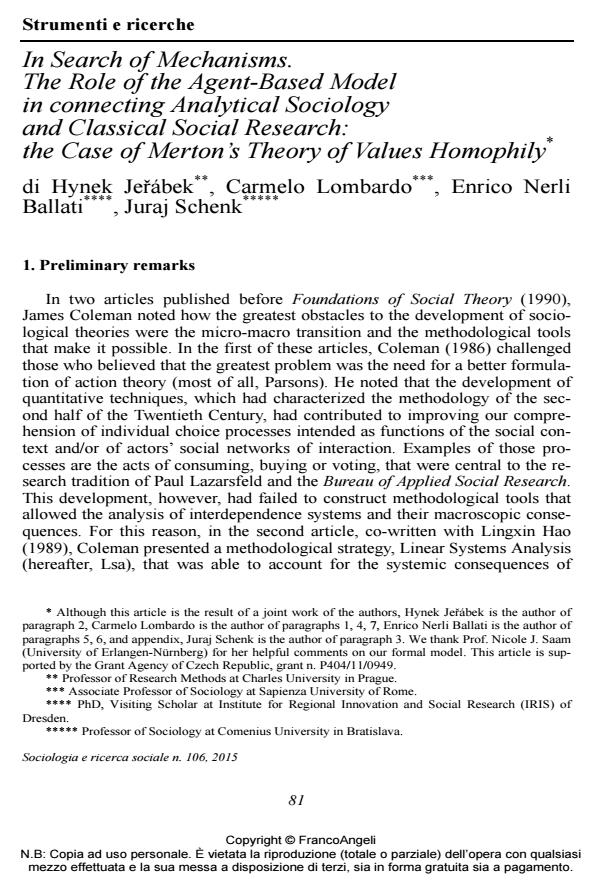In Search of Mechanisms. The Role of the Agent-Based Model in connecting Analytical Sociology and Classical Social Research: the Case of Merton’s Theory of Values Homophily
Journal title SOCIOLOGIA E RICERCA SOCIALE
Author/s Hynek Jerábek, Carmelo Lombardo, E. Neri Ballati, Juraj Schenk
Publishing Year 2015 Issue 2015/106
Language Italian Pages 34 P. 81-114 File size 236 KB
DOI 10.3280/SR2015-106005
DOI is like a bar code for intellectual property: to have more infomation
click here
Below, you can see the article first page
If you want to buy this article in PDF format, you can do it, following the instructions to buy download credits

FrancoAngeli is member of Publishers International Linking Association, Inc (PILA), a not-for-profit association which run the CrossRef service enabling links to and from online scholarly content.
Thanks Analytical Sociology, the concept of mechanism occupies a central place in contemporary sociology. Its intuitive and spontaneous use, however, characterized a part of empirical social research in the past, especially that developed by Paul F. Lazarsfeld and Robert K. Merton at Columbia University in the 1940’s and 1950’s. In this article, our aim is to explore a possible connection between these two research traditions, using the methodological tool of computational simulation. Specifically, the article discusses two hypotheses formulated by Lazarsfeld and Merton: the hypothesis of gratification, resulting from the duration of social interaction, and the hypothesis of formation of new social ties after a friendship breakup. Therefore, we implement four scenarios, each representing a specific combination of hypotheses. The results allow us to clearly observe four different emerging social patterns that are generated from the micro level by the interaction between individual agents who follow the mechanisms inspired by the original formulation of the theory. Through thes simulations, we can examine the unexpected effects - on a system of action - caused by the introduction of Lazarsfeld and Merton’s hypotheses
Hynek Jerábek, Carmelo Lombardo, E. Neri Ballati, Juraj Schenk, In Search of Mechanisms. The Role of the Agent-Based Model in connecting Analytical Sociology and Classical Social Research: the Case of Merton’s Theory of Values Homophily in "SOCIOLOGIA E RICERCA SOCIALE " 106/2015, pp 81-114, DOI: 10.3280/SR2015-106005